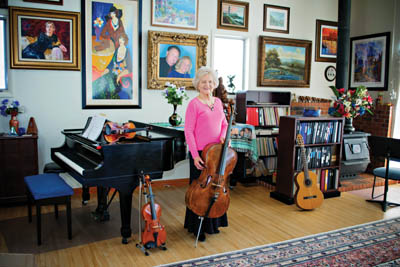
By Deb Peterson
Betty Dykstra’s home was built for music. When she and her late husband, Peter, moved to Mountain Home in the early 80s, they found a small house with a grand view of Lake Norfork and built a 24 x 56-foot recital hall across the entire back of it with a floor-to-ceiling wall of windows. Betty not only designed it herself, she was the primary carpenter on site.
“I brought in some carpenters to help me because it was a good-sized job,” she says.
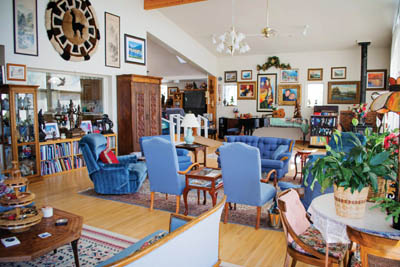
Betty had waited her entire life to focus on her music, and it was time. She was in her 50s, and her first order of business was to continue the training she started at the keyboard as a child of 5. Betty Ann Summers was born on the other side of the world to Methodist missionary parents in Seremban, West Malaysia, and lived in Sibu (now the name of her cat), Borneo until she was 8. Her mother taught her piano, and she sang her little heart out in many languages. One of her favorite songs was an old English folk poem set to music by G. Ambrose—Good Morning, Merry Sunshine. She sang it to her little brother, Gerald, Jr., when the sun peeked out from behind dark clouds. Today, she still sings it to herself when the sun pops out, and the happy song hints at Betty’s cheery nature.
“She’s positive,” says Robin Washington, one of Betty’s personal assistants from Home Instead. “She has no bad days. There is always something beautiful about every day. I admire that about her.”
Her sunny disposition was undoubtedly fostered in part by Betty’s international upbringing and wide world view. She traveled around the world three and a half times during her childhood. Homeschooled in the Calvert International system for two years, at 8 Betty was sent to Hebron School in South India, high in the mountains above Madras. She went to fourth grade in Madison, New Jersey, while her dad, Gerald Summers, Sr., earned a master’s degree in religion and education at Drew University Theological School. It was the only school year Betty spent in the United States, and she can remember the difficulty she had in math class switching her thinking from British pounds and Indian rupees to the American dollar.
Her family visited grandparents in Nebraska, Wyoming (where her maternal grandmother was friends with Wild Bill Cody!), and California when they were in the States, and sometimes traveled back to South Asia via the west, and sometimes via the east. At 11, Betty was enrolled with her brother at Woodstock School in Mussoorie, India, north of New Dehli in the foothills of the Himalaya.

The snow-covered peaks on the border of Tibet are visible from the school that sits at 7,500 feet above sea level. The year was 1940 and World War II was in full swing. Betty and her brother had been sent to spend the Christmas holiday with friends in Pakistan while their parents traveled to Singapore to attend a Methodist conference. Betty would never see her father again. He was captured by the Japanese, sent to a prison camp, and forced to make and repair shoes for four plus years. He died in the camp from pellagra and malnutrition in 1945, just weeks from Victory Over Japan Day (known as VJ Day). Betty’s mother had been able to escape to Methodist Mission Headquarters in Calcutta and reconnect with her children.
Esther Summers, Betty’s mother, was principal of a boys’ school in Moradabad 150 miles away from Woodstock. She saw her children for a few weeks in June when she would visit them at school, and during school holidays, December through mid-February, when they were home with her in Moradabad. Betty graduated from Woodstock in November of 1945, at 16. With Esther’s husband gone and Betty graduated, Esther decided it was time to return to the United States. At the end of February 1946, Esther, Betty, and Gerald, Jr. were on a Liberty ship that would take six weeks to reach New York.
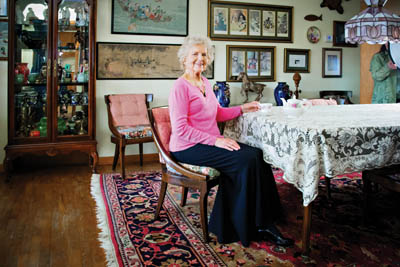
From New York, the family traveled to Berkeley, California, where Esther had her heart set on earning her master’s degree in education, but they couldn’t find housing anywhere. The sister of a friend from the mission in India offered them a house in Redlands, and Esther and Betty became college students together at the University of Redlands.
“We rode our bikes to school,” Betty says.
There had been an emphasis on music at Woodstock, and it was there that a teacher asked 13-year-old Betty if she would like to learn the viola. It would be the beginning of Betty’s lifelong love of string music, but as a young woman embarking on career training, she knew she couldn’t make a living playing music. She majored in science and chemistry with the goal of going on to medical school. Her music would have to wait. It would be decades before she would fully realize her talent with strings.
Betty transferred to the University of Southern California for her senior year of college. Her advisor there, Professor Woodrow, took her to the front of the line to register and then disappeared. When she went in search of him to say thank you, she found him talking to a young medical school student, Peter Dykstra. Peter, also a child of missionary parents, had grown up in China, and the young couple had a lot in common. They dated for four years before marrying, and while Betty gave up medical school, she was determined to earn her degree, which she did. She worked as a medical lab technologist to support the two of them.
After a nine-month residency at Mayo Clinic in Minnesota, and a two-year stint at West Point as a doctor with the United States Army, Peter and Betty settled in Los Angeles, where Peter was a pathologist at St. Vincent Medical Center for 14 years and Betty continued her work as a lab technician. They raised three daughters—Corinne, called Dee; Florence, called Flora; and Lena, called Lena. The girls took piano lessons from their next door neighbor.
“We lived next door to a very good piano teacher,” Betty remembers. “Sometimes it’s better to have lessons from someone other than mama.”
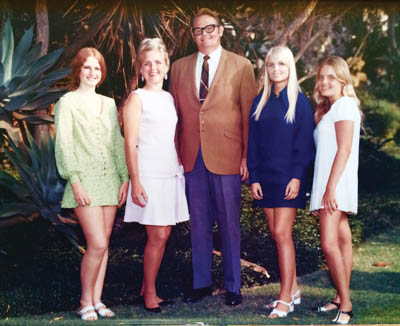
The world travel for this international couple was not over. In 1973, Peter and Betty took a one-year sabbatical and headed to Australia and New Zealand. They were called home a few months early by Flora. She was getting married. In later years, they would travel to China to visit Peter’s childhood places, and to India and Malaysia to revisit Betty’s early years, and they attended as many annual Woodstock reunions as they could.
For the rest of the 70s, Peter worked in forensic pathology with Los Angeles Chief Medical Examiner-Coroner Thomas Noguchi, perhaps most well known as the “coroner to the stars” and for having inspired the television series Quincy M.E., starring Jack Klugman.
Once or twice a year, Betty accompanied Peter to a pathology conference somewhere in the U.S. On one such trip to St. Louis, they made a side trip to visit a friend from California who had moved to Mountain Home. That trip would change their lives. The couple moved to Mountain Home, and Betty’s music career was about to begin.
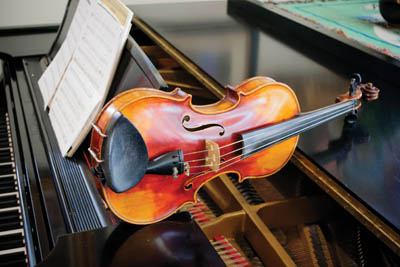
She wanted to teach, and in order to do that, she needed to go back to school herself. She chose Drury University in Springfield, an easy enough commute from Mountain Home, and earned her music degree. While studying there, she picked up violin lessons from the concert master of the Springfield Symphony. She added cello and bass. She started teaching students of all ages in the beautiful recital hall she built herself—piano, organ, violin, viola, cello, and bass.
“We loved her, and loved going to her house, her big music room,” says longtime friend Dr. Helga Chock. “Our two daughters took lessons from Betty, one while she was still in diapers, maybe a little too early. They became quite attached to each other. She really did an awesome job with the children.”
The families enjoyed each others’ company so much they often celebrated holidays and birthdays together. Helga’s husband is Chinese, so they enjoyed that shared culture.
“Peter narrated the concerts and did a good job of making them entertaining,” Helga says.
The celebration of music in the Dykstra home included ballroom dancing, a favorite pasttime of Peter’s and Betty’s. For a while in the early years of the music room, they pushed the furniture aside and spent Sunday afternoons swirling around the room with friends. They danced at the Elks Club and took lessons for a while at Arkansas State University-Mountain Home.
One of Betty’s great joys was playing classical music in several groups—the Classics Little Symphony with Dawn Cantwell; the Mozark Symphony, comprised of players from Missouri and the Ozarks; and the Barjock Quartet (Betty on viola, Arlene Shaw on second violin, Joe Golton on cello, and Chuck Yoder on violin. Ellen Pugh joined them on cello.) They played many concerts, weddings, and churches in Mountain Home, West Plains, and Gainesvile.
Music isn’t the only kind of art that fills the Dykstra home. The walls are covered with art of various kinds, some local and personal, much from around the world. East meets West throughout the home, a blending of the various cultures that was completely natural for both Peter and Betty. Sculptures of Shiva, a Hindu deity, feature as prominently as Christian figures. The Eight Immortals of China adorn the dining room wall. Betty points out the one female Immortal and the fact that they are playing music together. She smiles.
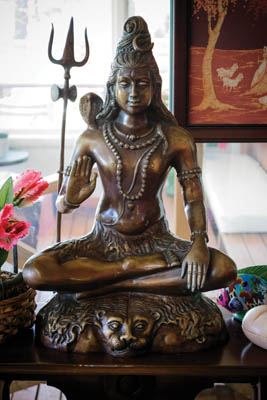
Betty’s friend, Kathryn Miles, appreciates the Dykstra art collection. “My friendship with Betty began when we came together with a few other like-minded women to organize a local P.E.O. (Philanthropic Educational Organization) chapter and it was fueled by our mutual interests in the arts,” Kathryn says. “I have been in Betty’s beautiful home overlooking Lake Norfork on several occasions and enjoyed her most interesting collection of art from points around the world. Her caring heart and adventurous spirit spill out in every conversation with her. Without trying, she can capture your attention and take you on a journey of her life experiences that I can only read about in a novel.”
Caroline Carroll is another of Betty’s P.E.O. sisters. “The first time I met Betty was at her home when she was hosting a P.E.O. meeting. I was immediately drawn to her. Her sparkling clear blue eyes and dazzling smile radiated an inviting and welcoming hello. She is a gracious lady, always remembering friends with birthday cards and handwritten thank you notes. She’s a fascinating woman, an accomplished musician, world traveler, and mesmerizing story teller!”
And, of course, the couple sang, in Methodist and Presbyterian choirs over the years, and sometimes together at home for the sheer fun of it. Peter died in December 2013, and it is clear that Betty misses him terribly, but the merry sunshine that lives within her continues to shine through her blue eyes. She still sings (tenor!) in the choir at First Presbyterian Church in Mountain Home, where she has been known to dress up as a flapper, a Victorian male, and a reindeer!
“She is quite the cut-up,” says Connie McLauren, who serves on the church staff. “She cares deeply about her church and her church family.”
Loweta Rogers agrees. “Betty is marvelous in so many ways. I am privileged to attend the same church where she sings in the choir and always has words of wisdom and insight to add to bible study discussions. She is a gracious hostess, and has entertained so many friends in her home over the years for music, teas, luncheons, and dinners. It is always a treat.”
In 2006, Peter and Betty gave $100,000 to ASUMH to fund the stage in the Ed Coulter Performing Arts Center at the Vada Sheid Community Development Center on campus. Dr. Ed Coulter said at the time that the Dykstras shared the university’s vision of opening doors that would bring expanded cultural experiences to the area.
“It is such a joy to see Mrs. Dykstra enjoying the many performances that occur on the Dykstra Stage throughout the year,” says Christy Keirn, director of communications and institutional advancement at ASUMH. “She is a beautiful lady, inside and out. It brings us great pride to honor her contribution in a way that is a tribute to all that she and Dr. Dykstra have achieved in life. The community will enjoy the arts from the Dykstra Stage for decades to come, thanks to their incredible generosity!”
“Mrs. Betty and Dr. Peter set wonderful examples for all of us on how to have fun, respect all cultures, love music, and help others,” says Lucretia Coulter. “The success of our Mountain Home orchestra can be attributed to their never-ending support and encouragement. The Twin Lakes Area will enjoy the variety of performances that will be on the Dykstra Stage in the Ed Coulter Performing Arts Center. Whether Mrs. Betty was teaching music, taking ballroom dance lessons, or performing in the orchestra, her infectious smile and positive attitude inspired the best in me and others. What a great example! What a beautiful lady!”
“Betty and Peter always supported the arts in the community,” Loweta says, “whether it was a high school play or a Broadway production, you could count on their presence and encouragement. As a charter member of her P.E.O. chapter, Betty was always involved in our fund raisers to support education for women. She is a dear sweet friend.”

When Betty is pressed for advice about living a happy life, it comes easily. “We should all love each other even if we don’t like each other,” she says. “Enjoy each moment of your God-given life. Love your friends and acquaintances, regardless of their creed, color, or political bents, and help those who need your help or guidance when they request it. Otherwise, be kind, smile, and encourage their endeavors.
“Love music and ‘make a joyful noise.’ It will lift spirits, other’s and yours, and make life richer for all. Keep learning, and share with those who request your guidance. Have fun!”
The world is a wonderful, joyful place, Betty says. “Enjoy life. Don’t worry so much. Be patient and take the time to work out your problems.”
You can be sure Betty Dykstra is relaxing at home this evening, likely listening to music that fits her mood. It could be Beethoven’s Moonlight Sonata or something from Chopin, Brahms, or Schumann, some of her favorites. Or she could be humming her favorite hymn, Nearer My God to Thee by Sarah Flower Adams. If a long sunbeam happens to break through the clouds while the sun is setting, you know that Betty Dykstra will be singing, “Good night, merry sunshine.” M! June/July 2016

Jeri PEO Sister
Beautiful Betty !! Such a wonderful story!!